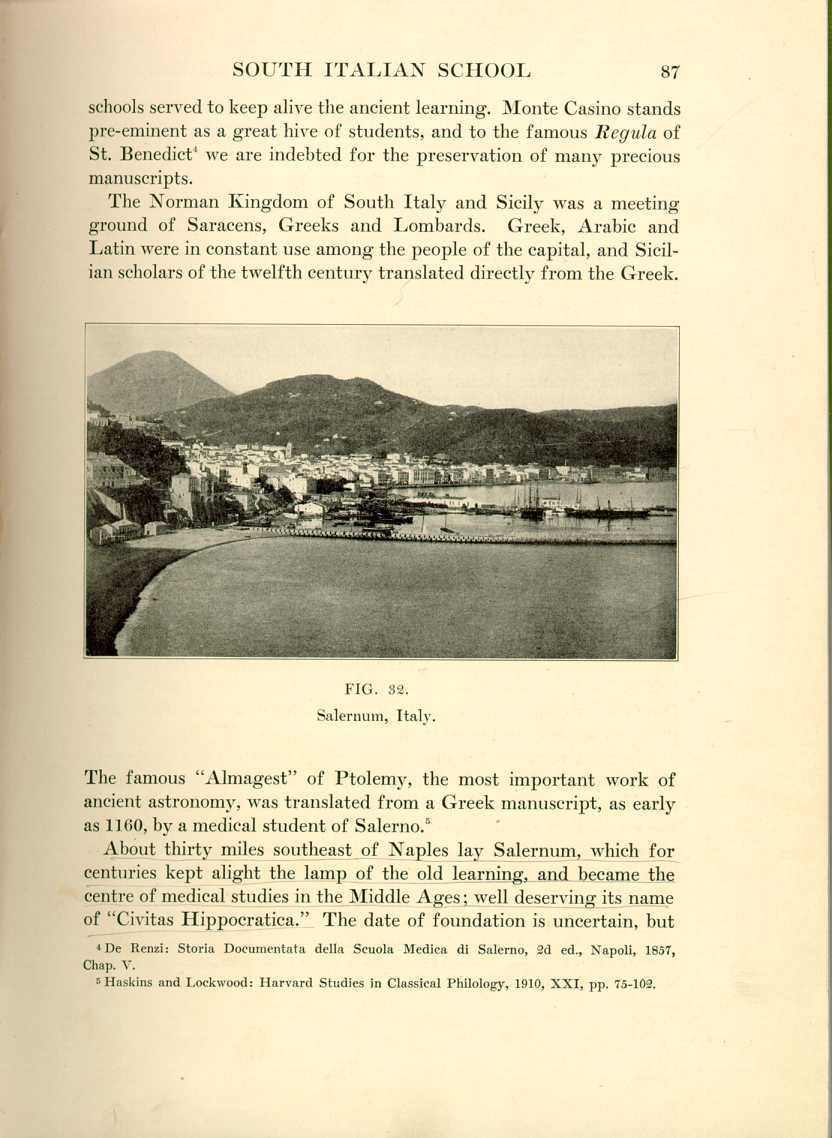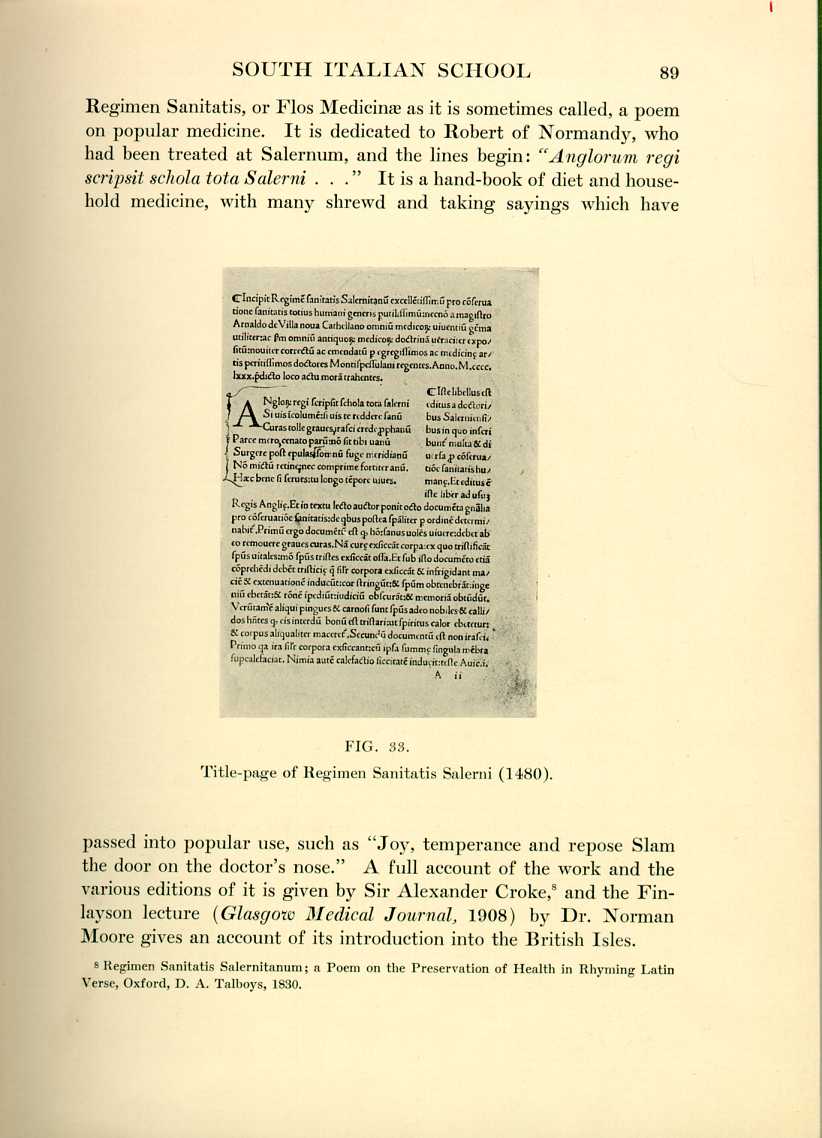| CHAPTER III The Evolution of Modern Medicine | ||
SOUTH ITALIAN SCHOOL
A WIDE stream is in Italy, where the "antique education never stopped, antique reminiscence and tradition never passed away, and the literary matter of the pagan past never faded from the consciousness of the more educated among the laity and clergy." [71] Greek was the language of South Italy and was spoken in some of its eastern towns until the thirteenth century. The cathedral and monastic
The Norman Kingdom of South Italy and Sicily was a meeting ground of Saracens, Greeks and Lombards. Greek, Arabic and Latin were in constant use among the people of the capital, and Sicilian scholars of the twelfth century translated directly from the Greek.
The famous "Almagest" of Ptolemy, the most important work of ancient astronomy, was translated from a Greek manuscript, as early as 1160, by a medical student of Salerno.[73]
About thirty miles southeast of Naples lay Salernum, which for centuries kept alight the lamp of the old learning, and became the centre of medical studies in the Middle Ages; well deserving its name of "Civitas Hippocratica." The date of foundation is uncertain, but
There are crowds of guests and travellers here;
Pilgrims and mendicant friars and traders
From the Levant, with figs and wine,
And bands of wounded and sick Crusaders,
Coming back from Palestine.
There were medical and surgical clinics, foundling hospitals, Sisters of Charity, men and women professors—among the latter the famous Trotula—and apothecaries. Dissections were carried out, chiefly upon animals, and human subjects were occasionally used. In the eleventh and twelfth centuries, the school reached its height, and that remarkable genius, Frederick II, laid down regulations for a preliminary study extending over three years, and a course in medicine for five years, including surgery. Fee tables and strict regulations as to practice were made; and it is specifically stated that the masters were to teach in the schools, theoretically and practically, under the authority of Hippocrates and Galen. The literature from the school had a far-reaching influence. One book on the anatomy of the pig illustrates the popular subject for dissection at that time. [74] The writings, which are numerous, have been collected by De Renzi. [75]
The "Antidotarium" of Nicolaus Salernitanus, about 1100, became the popular pharmacopœia of the Middle Ages, and many modern preparations may be traced to it.
The most prominent man of the school is Constantinus Africanus, a native of Carthage, who, after numerous journeys, reached Salernum about the middle of the eleventh century. He was familiar with the works both of the Greeks and of the Arabs, and it was largely through his translations that the works of Rhazes and Avicenna became known in the West.
One work above all others spread the fame of the school—the
passed into popular use, such as "Joy, temperance and repose Slam the door on the doctor's nose." A full account of the work and the various editions of it is given by Sir Alexander Croke, [76] and the Finlayson lecture (Glasgow Medical Journal, 1908) by Dr. Norman Moore gives an account of its introduction into the British Isles.
S. de Renzi: Collectio Salernitana, 5 vols., Naples, 1852-1859; P. Giacosa: Magistri Salernitani, Turin, 1901.
Regimen Sanitutis Salernitanum; a Poem on the Preservation of Health in Rhyming Latin Verse, Oxford, D. A. Talboys, 1830.
| CHAPTER III The Evolution of Modern Medicine | ||

